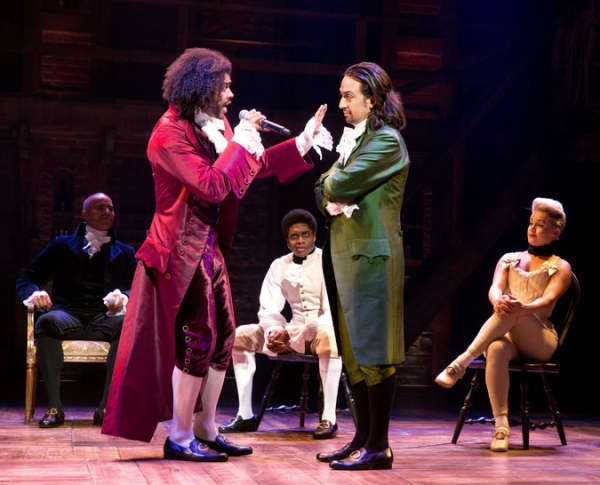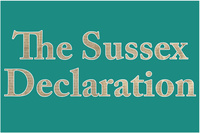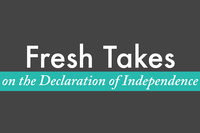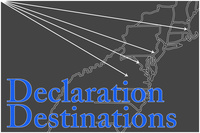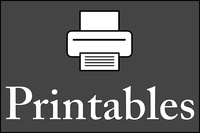Happy Centennial, National Park Service!
The National Park Service was founded on August 25, 1916. To celebrate its centennial, here is a list of national historic sites and parks related to the Declaration of Independence.
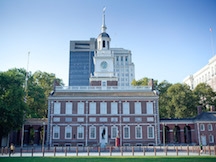 Independence National Historic Park
Independence National Historic Park
Philadelphia, PA
@INDEPENDENCENHP
This park includes not just Independence Hall (pictured), where the Declaration of Independence was debated and signed, but also the Liberty Bell, the Benjamin Franklin Museum and Franklin Court, the Declaration House (a reconstruction of the house where Jefferson drafted the Declaration), and the President's House site. Download the NPS Independence Mobile App to digitally experience this park!
 Adams National Historical Park
Adams National Historical Park
Quincy, MA
Designated as a National Historic Site in 1946, and a National Historical Park in 1998, this park includes eleven buildings representing the lives of five generations of Adamses. The buildings include the birthplace of John Adams (pictured), who lived there until 1764, when he and Abigail Adams moved to the house known as the John Quincy Adams Birthplace.
 Fire Island National Seashore
Fire Island National Seashore
Long Island, New York
@FireIslandNPS
William Floyd (1734-1821), signer of the Declaration of Independence from New York, had an estate (pictured) on Mastic Beach which is now part of the Fire Island National Seashore. Floyd was born in the house, also known as Old Mastic House, and lived there until 1803 (his later home in Westerville, New York is known as the Gen. William Floyd House).
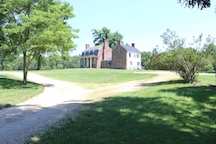 Thomas Stone National Historic Site
Thomas Stone National Historic Site
Port Tobacco, MD
@ThomasStoneNHS
Established in 1978, this is the only NHS created solely for a signer of the Declaration of Independence. The site includes the restored mansion and grave of Thomas Stone (1743-1787), delegate from Maryland.
 Memorial to the 56 Signers of the Declaration of Independence
Memorial to the 56 Signers of the Declaration of Independence
Washington, D.C.
@NationalMallNPS
Located within the Constitution Gardens and part of the National Mall and Memorial Parks, this memorial includes stones engraved with the signatures of the signers of the Declaration. The memorial was dedicated on July 2nd, 1978, the 202nd anniversary of the vote for independence.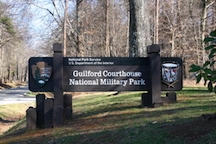 Guilford Courthouse National Military Park
Guilford Courthouse National Military Park
Greensboro, NC
@GuilfordNPS
This park commemorates one of the largest battles of the Revolutionary War's Southern Campaign. But there is also a monument on the battleground to two of North Carolina's three signers of the Declaration of Independence, William Hooper and John Penn, whose remains were re-enterred at the courthouse. A bronze statue of Hooper, known as the Signers Monument is among the monuments in the park. The signers' remains and the monument were moved to their present location in the park in 1976.
New Exhibit: "1776 - Breaking News: Independence" at Newseum
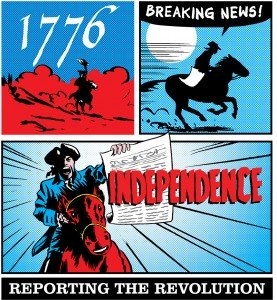
A new exhibit featuring one of only 19 copies of the July 6th issue of the Pennsylvania Evening Post opens at the Newseum in Washington, D.C. on July 1. The exhibit includes interactive kiosks for in-depth exploration of the newspaper, as well as a graphic novel-inspired video. The Pennsylvania Evening Post is on loan from David Rubenstein and will be on view indefinitely in the Newseum's Pulliam Family History of Liberty Gallery.
Watch David M. Rubenstein, philanthropist and loaner of the Pennsylvania Evening Post in this exhibition, discuss the Declaration of Independence with Newseum President and CEO Jeffrey Herbst:
2016 Jefferson Lecture
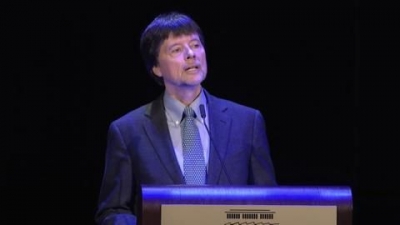 In May 2016, documentarian Ken Burns delivered the National Endowment for the Humanities 2016 Jefferson Lecture, and talked about the second sentence of the Declaration of Independence. Read this excerpt, watch (excerpt begins at 37:45) or read the full lecture.
In May 2016, documentarian Ken Burns delivered the National Endowment for the Humanities 2016 Jefferson Lecture, and talked about the second sentence of the Declaration of Independence. Read this excerpt, watch (excerpt begins at 37:45) or read the full lecture.
"There is no small irony that this lecture is named for Thomas Jefferson, the author of our national catechism, the second sentence of the Declaration of Independence. As I sit writing this, I am surrounded by objects that relate directly or indirectly to him: there is his invention right on my desk, a replica of a four-sided revolving book holder, a gift from the folks at Monticello after I made a film both celebratory and critical of our third president; to my right over by the window is Jefferson’s bust, that now somehow sports a Red Sox hat (I don’t know his baseball preference, but they were the last team to integrate); there is a magnificent photograph of Jackie Robinson just above me, all grit and determination, who had to endure the residual fallout of Jefferson’s—and our—great failing; there is another bust— of Abraham Lincoln—above me to my left, who fortunately provided a much-needed corrective to the Declaration, replacing Jefferson’s 1.0 with a new 2.0, the Gettysburg Address, still our guiding statement of principles, still fundamentally un-amended in 150 years. And then, immediately to my left on a bookshelf, is a heavy iron human ankle shackle, which I now and then pick up, its weight and heft a disturbing reminder of a part of our past many would prefer to ignore. I cannot.
Jefferson’s great sentence begins, 'We hold these truths to be self evident, that all men are created equal…,' but we are compelled to stop there, only a third of the way through, because 'Mr.' Jefferson, as he wrote these words, owned more than a hundred human beings, yet he didn’t see the contradiction, and more important, did not see fit to free any of those human beings in his lifetime. He helped, both symbolically and literally, to set our country on a devastating, inexorable course that would lead to our near national suicide. A more perfect union would have—still has—to wait. That, ladies and gentlemen, is still our collective burden."
Pursue Your Happiness
In March 2016, Pennsylvania changed its tourism slogan from "State of Independence" to "Pursue Your Happiness". This video refers to the second sentence of the Declaration of Independence, as well as Independence Hall and other historic sites in Philadelphia.
Button! on The Late Show with Stephen Colbert
In December 2015, Lin-Manuel Miranda and Stephen Colbert performed "Button!", a musical number about the life of Declaration signer Button Gwinnett, in the style of the musical "Hamilton". Colbert plays Button Gwinnett, and Miranda (who stars as Alexander Hamilton in "Hamilton") plays John Adams. In the rap, Gwinnett tries to convince Adams that they are colleagues, and includes the line "It's me Button Gwinnett, I don't need a citation / Cause we met tête-à-tête when we signed the Declaration".
Exploring "Hamilton" and Hip-Hop Steeped in Heritage
The hit Broadway musical "Hamilton" references the Declaration of Independence several times. This New York Times article written by Anthony Tommasini and Jon Caramanica includes a photo of Lin-Manuel Miranda as the titular character Alexander Hamilton and Daveed Diggs as Thomas Jefferson, engaged in a rap battle where Diggs quotes the Declaration: "Life, liberty and the pursuit of happiness. / We fought for these ideals, we shouldn't settle for less. / These are wise words, enterprising men quote 'em. / Don't act surprised, you guys, 'cause I wrote 'em."
The article also includes a video clip of "The Schuyler Sisters", featuring Leslie Odom, Jr. as Aaron Burr and Renee Elise Goldsberry, Philippa Soo, and Jasmine Cephas Jones as Angelica, Eliza and Peggy Schuyler, respectively. In "The Schuyler Sisters", Angelia sings: "You want a revolution, I want a revelation, so listen to my declaration." Her sisters chime in to quote the Declaration: "We hold these truths to be self-evident, that all men are created equal..." and Angelica continues, "and when I meet Thomas Jefferson, I'mma compel him to include women in the sequel!"

